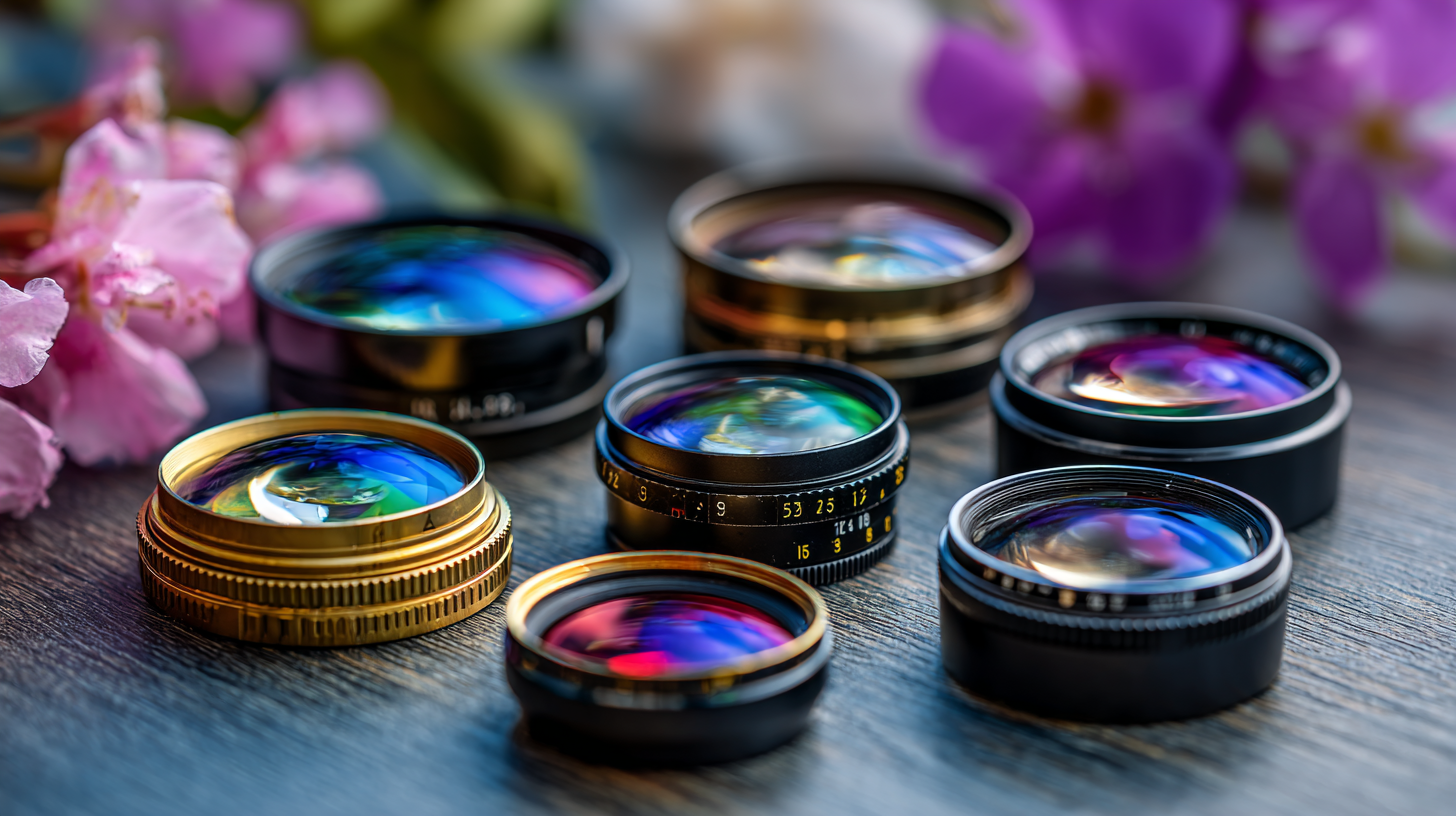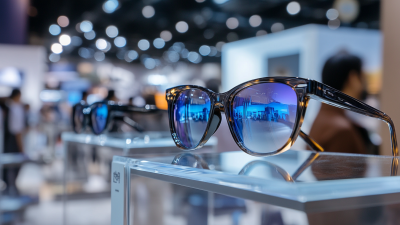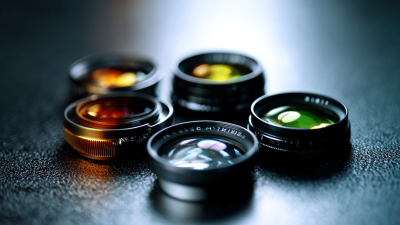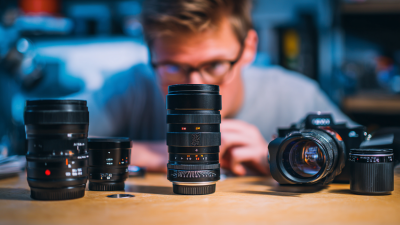In the age of advanced technology, optical lenses play a pivotal role in amplifying our everyday experiences, transforming how we interact with the world around us. From the smartphones we carry in our pockets to the cameras that capture our most cherished moments, the integration of optical lenses is fundamental in enhancing visual clarity and enabling sophisticated functionalities. Exploring the marvels of optical lenses reveals not only their scientific significance but also their practical applications in everyday technology. This article delves into the mechanics of optical lenses, offering insightful tips on how to optimize their use in various devices, ensuring you leverage their full potential. Whether you are an avid photographer seeking to improve your craft or simply a tech enthusiast aiming to understand the principles behind your gadgets, understanding optical lenses is essential for navigating the complexities of modern technology.

Optical lenses play a pivotal role in modern technology, impacting various devices from cameras to smartphones. Understanding the basic types of optical lenses—convex and concave—is essential.
 Convex lenses, which converge light rays, are commonly used in magnifying glasses and eyeglasses to aid vision correction. Data from a recent report by the Optical Society indicates that approximately 75% of adults use some form of vision correction, highlighting the significance of lenses in everyday life. On the other hand, concave lenses diverge light rays and are often used in applications such as lasers and certain types of cameras.
Convex lenses, which converge light rays, are commonly used in magnifying glasses and eyeglasses to aid vision correction. Data from a recent report by the Optical Society indicates that approximately 75% of adults use some form of vision correction, highlighting the significance of lenses in everyday life. On the other hand, concave lenses diverge light rays and are often used in applications such as lasers and certain types of cameras.
When choosing optical lenses for specific applications, it's crucial to consider their functions. For instance, in photography, achieving the desired focal length and clarity is vital for stunning images. According to a report by Grand View Research, the global optical lens market is expected to reach $18.5 billion by 2027, driven by innovations in smartphone camera technology.
Tips: When selecting lenses for home use, consider the purpose—whether for personal vision correction or hobbyist photography. Invest in high-quality lenses; often, they provide better clarity and durability. Additionally, ensure that the lens coatings, like anti-reflective or UV protection, align with your needs for enhanced performance.
Optical lenses play a pivotal role in enhancing the photography and video capabilities of smartphones, transforming them into powerful imaging tools. In the quest for better quality, smartphone manufacturers are increasingly incorporating advanced lens technologies. The latest reports indicate that high-resolution sensors combined with wide-angle lenses are now standard features in leading smartphones, significantly improving their performance in landscape photography. This advancement allows users to capture stunning images with impressive clarity, making smartphones the go-to devices for both amateur and professional photographers.
For those looking to elevate their smartphone photography even further, complementary camera lenses have become a popular accessory. Recent findings highlight that add-on lenses can enhance the capabilities of both Android and iPhone devices, allowing for improved macro shots, better portraits, and even anamorphic effects. Alongside advancements in hardware, the emergence of specialized lenses underscores the growing demand for high-quality mobile photography. In 2025, the best camera phones will not only boast innovative features but can also be significantly enhanced with the right optical accessories, reflecting a remarkable evolution in mobile imaging technology.

In recent years, the advancements in optical lens design have significantly impacted the fields of Augmented Reality (AR) and Virtual Reality (VR) technologies. According to a report by industry analysts, the global AI glasses market is anticipated to reach a staggering 36.5 billion yuan by 2024, reflecting a growing interest in these innovative devices. This surge can largely be attributed to the enhanced user experience brought about by refined optical designs that prioritize comfort and aesthetics, meeting diverse consumer needs.
The introduction of solutions based on cutting-edge freeform optical technology showcases how companies are pushing boundaries in the AR sector. For instance, at the recent mobile communication conference, numerous innovative AR/VR products were unveiled, highlighting the potential of lightweight devices powered by advanced processors. This momentum indicates a shift towards a more immersive experience, as these technologies evolve to integrate seamlessly into everyday life.
**Tips:** When choosing optical devices, consider the fit and comfort level, as these are crucial for prolonged use. Additionally, stay updated on the latest innovations in lens technology, as manufacturers are continuously optimizing their designs to enhance usability and functionality.
| Technology Type | Lens Material | Applications | Advantages |
|---|---|---|---|
| Augmented Reality (AR) | Polycarbonate | Smart glasses, heads-up displays | Lightweight, impact-resistant, allows for thinner designs |
| Virtual Reality (VR) | Glass | VR headsets, immersive simulations | Superior optical quality, scratch-resistant surface |
| Smartphone Cameras | High-index plastic | Mobile photography, video recording | Compact design, enables advanced features like dual lens |
| Wearable Tech | Fused silica | Health monitoring devices, smartwatches | High thermal stability, excellent optical performance |
Optical lenses play a crucial role in the advancement of medical imaging technologies, profoundly impacting diagnostics and treatment protocols. From traditional X-rays to cutting-edge MRI systems, lenses are fundamental components that enhance image clarity and precision. Their ability to focus light and manipulate electromagnetic waves allows for the detailed visualization of internal structures, enabling healthcare professionals to make informed decisions. For instance, in endoscopy, optical lenses facilitate direct observation of internal organs, transforming diagnostic capabilities and reducing the need for more invasive procedures.
Moreover, the integration of optical lenses in technologies like ultrasound imaging and computed tomography (CT) scans has significantly improved the detection of diseases at earlier stages. These imaging techniques rely on high-quality lens systems to produce sharp and accurate images, which are essential for detecting anomalies such as tumors or internal injuries. As a result, the use of sophisticated optical lenses not only enhances the efficacy of medical imaging but also contributes to better patient outcomes by facilitating timely and appropriate treatment plans. The ongoing evolution of optical technology promises even greater advancements in the field, paving the way for improved diagnostic tools and enhanced healthcare delivery.
This bar chart illustrates the percentage usage of various imaging techniques that rely on optical lenses, highlighting their critical role in modern diagnostics and treatment protocols.
In today's technology-driven world, the significance of lens coatings in improving performance and durability of everyday devices cannot be overstated. According to a recent report from the Optical Society of America, lens coatings can enhance light transmission efficiency by up to 98%, significantly improving the quality of images in cameras, smartphones, and various optical instruments. These coatings are essential not only for enhancing visibility but also for protecting the lenses from scratches, dust, and environmental factors that can diminish their functionality over time.
For optimal performance, consider investing in multi-layer anti-reflective coatings. Such coatings reduce glare and reflections, making them ideal for devices like virtual reality headsets and AR glasses, where clarity is paramount. Additionally, reports indicate that lenses treated with hydrophobic and oleophobic coatings can repel water and oils, maintaining transparency and cleanliness, which enhances user experience.
Tips for maintaining your optical devices include regularly cleaning the lenses with a microfiber cloth to avoid scratches, and storing them in protective cases to shield against environmental damage. Investing in devices with high-quality lens coatings may initially seem costly, but the longevity and improved performance justify the expense, ultimately providing better value and enhanced user satisfaction.







